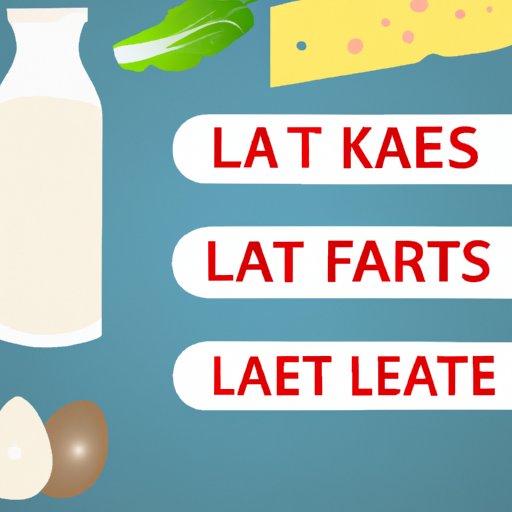Introduction
Eating less fat is an important part of a balanced, healthy diet. It means eating fewer saturated and trans fats and more unsaturated fats, which can help lower your cholesterol levels and reduce your risk of certain diseases. In this article, we’ll look at some tips for eating less fat, including choosing lean proteins, using healthy cooking methods, incorporating vegetables into meals, adding low-fat or non-fat dairy products, reading labels, and selecting healthy fats from sources like nuts, seeds, avocados, and olive oil.
Choose Lean Proteins
One way to eat less fat is to choose lean proteins. Good sources of lean protein include lean beef, skinless poultry, fish, eggs, legumes, and tofu. These proteins are low in fat and high in essential nutrients like vitamins, minerals, and fiber. Eating lean proteins can help you feel full longer, improve your digestion, and maintain healthy blood sugar levels.
In addition to being a good source of lean protein, fish is also high in omega-3 fatty acids, which have been shown to reduce inflammation, improve brain function, and protect against heart disease. Some types of fish that are especially high in omega-3s include salmon, mackerel, herring, and sardines.
Use Healthy Cooking Methods
Another way to eat less fat is to use healthy cooking methods. Instead of frying foods in oil, try baking, broiling, steaming, or grilling them. This will help keep the fat content down and prevent the formation of unhealthy compounds like acrylamide. Additionally, using herbs and spices instead of butter or margarine can add flavor without additional fat.
When cooking with oil, it’s best to choose a healthy type such as olive, canola, or avocado oil, as these oils contain monounsaturated fats which can help reduce cholesterol levels. Avoid cooking with hydrogenated oils, which are high in unhealthy trans fats.
Incorporate Vegetables into Meals
Vegetables are an important part of a balanced diet, and they’re also a great way to eat less fat. They’re naturally low in fat, and they provide essential vitamins, minerals, and fiber. A few examples of vegetables to include in meals are leafy greens, broccoli, cauliflower, tomatoes, peppers, squash, and mushrooms.
Eating more vegetables can also help you feel full faster, as they take up space in your stomach, making you less likely to overeat. Plus, they’re versatile and can be added to almost any dish, from salads to stir-fries to soups.
Add Low-Fat or Non-Fat Dairy Products
Low-fat or non-fat dairy products, such as milk, yogurt, and cheese, are another great way to eat less fat. Dairy products can be a good source of calcium, vitamin D, and other essential nutrients. When choosing dairy products, look for those that are labeled “low-fat” or “non-fat.”
If you don’t like the taste of low-fat or non-fat dairy products, you can also opt for plant-based alternatives. Soy, almond, and oat milks are all good options and can be used in place of regular cow’s milk in most recipes.
Read Labels and Avoid Processed Foods with High Amounts of Saturated or Trans Fats
Reading nutrition labels is a good way to identify foods that are higher in fat than others. Look for foods that are low in saturated and trans fats, and avoid processed foods that contain high amounts of these fats. Examples of processed foods that often contain high amounts of saturated or trans fats include fried foods, snack cakes, cookies, crackers, and chips.
It’s also important to pay attention to serving sizes when reading nutrition labels. Many people tend to underestimate how much they’re actually eating, so be sure to measure out the appropriate amount for each food item.
Choose Healthy Fats from Sources like Nuts, Seeds, Avocados, and Olive Oil
Finally, make sure to include some healthy fats in your diet. Healthy fats, such as those found in nuts, seeds, avocados, and olive oil, can help keep you feeling full and provide essential nutrients like omega-3 fatty acids. Just be sure to watch your portion sizes, as these foods can be high in calories.
Including healthy fats in your diet can also help you absorb certain vitamins, such as vitamins A, D, E, and K, which are fat-soluble. So, if you’re not getting enough of these vitamins from other sources, adding a small amount of healthy fat to your meals can help ensure you get adequate amounts.
Conclusion
Eating less fat is an important part of a balanced, healthy diet. This can be achieved by choosing lean proteins, using healthy cooking methods, incorporating vegetables into meals, adding low-fat or non-fat dairy products, reading labels, and selecting healthy fats from sources like nuts, seeds, avocados, and olive oil. Implementing these suggestions can help you get the nutrients you need while still reducing your fat intake.
(Note: Is this article not meeting your expectations? Do you have knowledge or insights to share? Unlock new opportunities and expand your reach by joining our authors team. Click Registration to join us and share your expertise with our readers.)
